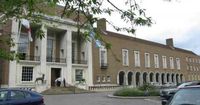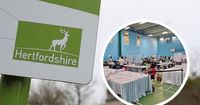In a historic shift, the Conservatives have lost control of Hertfordshire County Council for the first time in 26 years, following the elections held on May 1, 2025. The results have led to a state of 'no overall control' within the council, marking a significant change in the political landscape of the region.
Before the elections, the Conservatives held a commanding lead with 42 of the council’s 78 seats. However, the latest results show a dramatic drop in their representation, with the Liberal Democrats emerging as the largest single party, securing 31 seats. The Conservatives now hold 22 seats, while Reform UK has gained 14, Labour and the Green Party each have 5, and there is one Independent councillor. This redistribution of seats reflects a notable shift in voter sentiment across the county.
According to the newly elected Liberal Democrat group leader, Cllr Steve Jarvis, the election results are a clear indication of the residents' dissatisfaction with the Conservative-led council. Jarvis stated, "It’s time for change in Hertfordshire, and we are ready to lead with a 10-point plan aimed at addressing key issues such as road maintenance, services for children with special needs, the environment, and flooding. We are excited to explore partnerships with other parties to implement our vision, despite not having an outright majority."
The Liberal Democrats' surge can be attributed to a combination of local discontent and the national political climate. Conservative Cllr Richard Roberts expressed disappointment over the loss of seats, attributing it to the broader national mood, which he believes has been influenced by the Labour government’s failure to inspire hope after the recent General Election. He remarked, "We were doing a good job for the residents and businesses in Hertfordshire, but the national sentiment has washed right over us. I blame the government for creating it and Nigel Farage for exploiting it."
Reform UK, led by Nigel Farage, has emerged as a significant player in the council, with spokesperson Hamish Haddow describing their 14-seat gain as "phenomenal." Haddow emphasized that Reform UK will bring greater scrutiny to the council chamber, aiming to increase their influence in the district and borough councils in the upcoming elections next year.
Meanwhile, Labour leader Nigel Bell expressed disappointment that his party has lost one of its seats, reducing their representation from six to five. Bell acknowledged the national trend favoring Reform UK, stating, "We must show that we understand the concerns of our constituents, especially after disappointing results in areas like Stevenage where we lost the Bedwell ward to Reform UK, who gained five out of six divisions."
The election results, which were announced after a thorough counting process across the county's ten district areas, have left Hertfordshire in an unprecedented state of political flux. County council chief executive Angie Ridgwell congratulated all newly elected members, expressing optimism for collaboration across party lines. She stated, "We look forward to working with all county councillors as we embrace the opportunities for Hertfordshire and our residents and continue to be the county of opportunity for all."
As the dust settles on the election, the Liberal Democrats, now the largest party, face the challenge of forming a stable administration. The council's future may involve a minority administration or a coalition, as 40 seats are required for a majority. Potential alliances could see the Liberal Democrats teaming up with either the Conservatives or Reform to achieve that threshold. However, a coalition with Labour or the Green Party alone would not suffice.
In Watford, the Liberal Democrats performed particularly well, winning five of the six available seats. This success reflects their strong local support, while Labour managed to retain one seat. The results from Watford, along with the overall county outcomes, have been described by local Reform UK spokesperson Gary Ling as an "earthquake" in the political landscape, indicating a significant shift in voter priorities.
The election results have also raised questions about the future of Hertfordshire’s governance, especially with discussions around reorganizing the county into a single unitary body, which would eliminate district and borough councils. This reorganization will proceed without any one party holding control, complicating the implementation of policies and initiatives.
As the newly elected councillors prepare to take their seats, the next steps for the council will involve negotiations and discussions among the various parties. The Liberal Democrats are expected to initiate talks with potential allies to outline their plans and priorities for the forthcoming term.
In summary, the Hertfordshire County Council elections of May 2025 have resulted in a dramatic political shift, with the Conservatives losing their long-held majority and the Liberal Democrats emerging as the largest party. The implications of these results will shape the council's dynamics and governance in the years to come, as parties navigate the complexities of coalition-building and policy-making in a newly competitive landscape.





